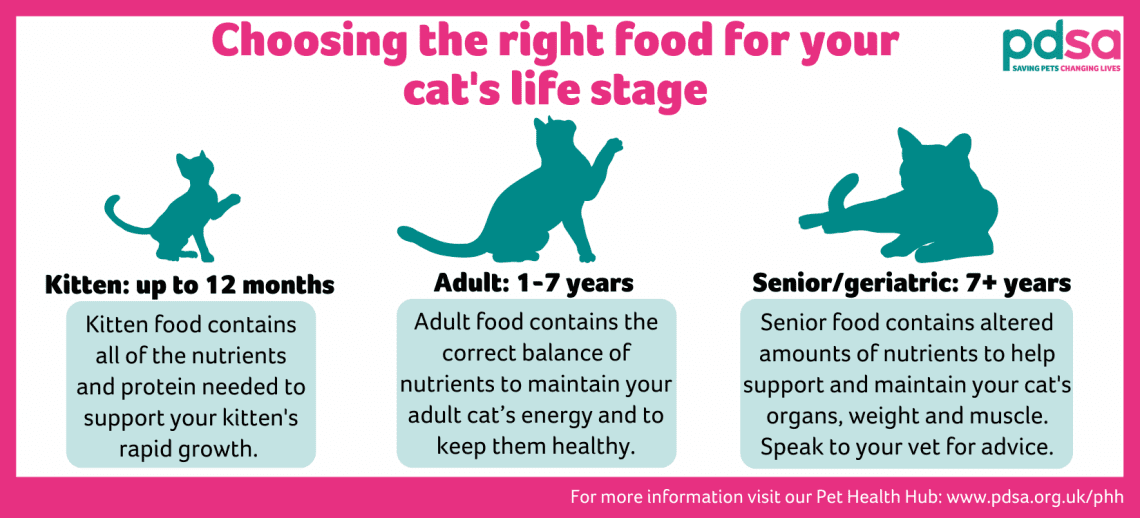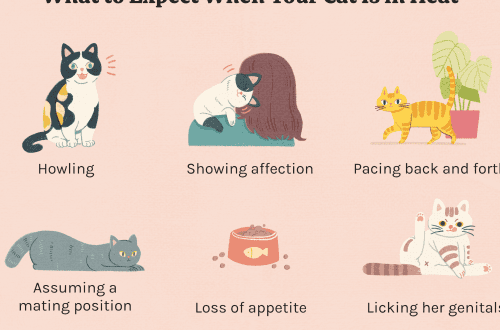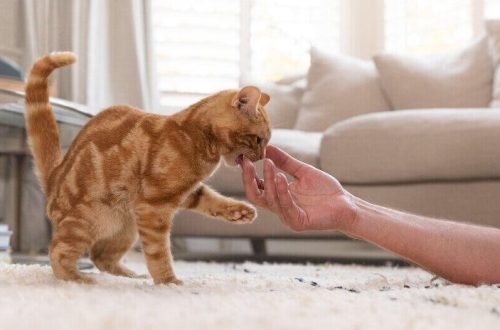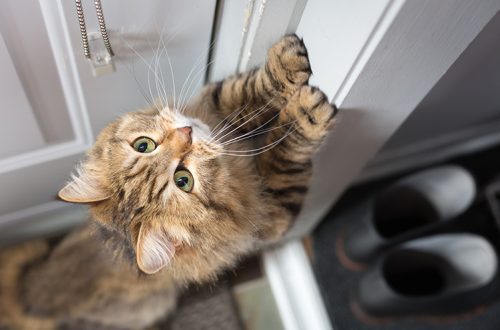
What should be the diet of a cat?
The answer to the question of what to feed a cat is quite obvious (a balanced diet that is appropriate for the age and needs of the cat), but there are several opinions about what is the best feeding regimen. Many experts agree that free feeding, also referred to as “random feeding” or “feeding at will,” is not ideal for several reasons, including the following:
- In a multi-cat household, a loose feeding schedule means that when one cat is underfeeding, the others eat too much.
- A full bowl left out all day can encourage competitive behavior or become a source of conflict in a multi-animal home.
- Free feeding makes it difficult to monitor changes in eating behavior in cats, which are often signs of disease.
- Random feeding promotes overeating, which can lead to excessive weight gain in the animal. If a cat becomes overweight, it will be at risk of developing serious diseases such as osteoarthritis and diabetes.
- Free-fed cats may overeat and gain weight even if they are on a “diet” or calorie controlled diet.
Contents
A cat’s diet is important for her health and quality of life
How often and in what portions should a cat be fed? Since cats generally prefer to eat smaller and more frequent meals throughout the day, many experts recommend measuring the daily ration based on the information on the food label and dividing it into several smaller meals. This is commonly referred to as “portion feeding” or “dosed feeding” which satisfies the cat’s natural instinct to eat small and frequent meals while avoiding the dangers of overfeeding.
Of course, for some animals, such as older, sick cats or growing kittens, a free feeding regimen may be a good choice. Ask your veterinarian for advice on a feeding regimen that is right for your particular pet.
Read the information on the food label
Cat food bags usually have a simple chart (or a few short sentences) showing how to feed according to your cat’s weight. While lifestyle certainly matters—sun exposure burns fewer calories than tree climbing—the recommended amount of food based on your cat’s weight is the best starting point. This will make it easier for you to adjust the regimen or ask your veterinarian for feeding advice if you feel that your pet is unintentionally gaining weight or even losing weight. If you want your cat to lose weight, just give her the amount of food indicated for her ideal weight, not her current weight.
Even for those who like to mix different types of food – such as dry food, spider food or canned food – portion feeding is not difficult. Hill’s cat food labels provide information on how to mix foods to maintain your cat’s optimal health and make it easier for you to feed your cat.
Keep it simple
If you have been free feeding your cat and would like to switch to dosed or portioned feeding, it is important to make this easier for yourself. Here are some helpful tips to help ensure the success of your venture and understand how many times a day to feed your pet:
- Find the right measuring tool, whether it’s a handy food grade measuring cup or a stylish silver spoon, as long as you get the right size. Choose a container that, when full or filled to a certain level, will contain exactly the amount that your cat needs. This will make the feeding process quick and easy and help avoid a subjective “by eye” approach that will change depending on which family member is feeding the pet.
- Measure out the right amount: Many cat owners find it helpful to measure the daily amount of food and put it in a cat-proof container (separately for each cat), including any treats, and feed the cat only what is in this container during the day. Use whatever you like, a pretty glass jar or a simple, easy-to-clean plastic container.
- Treat Wisely: If you love giving treats to your cat, be sure to calculate their calorie content based on her daily needs to avoid surprises in the form of weight gain. Read the labels on the treat packaging for ingredients and calorie information.
Save yourself time
Do you feel like you don’t have time for multiple feedings a day, or does it fit into your schedule? Hide food for your cat so she can find it herself. While she’s napping in the sun (or eating breakfast), take a moment to spread a few small meals around the house. On a bookcase, on a windowsill, feel free to get creative. Hide food in places where it is often and where it has free access. Keeping her active in finding and fulfilling her hunting instincts is a fun way to feed a cat, but it really only works with dry food, as wet food can go bad before she finds it.
Do you count cats?
If you have one cat in the house, you can give her a daily serving once a day so that she can come to the bowl whenever she wants, but in families with several animals, this is not the case. Find a quiet, secluded spot for each cat, out of sight of other animals, to avoid problems with greed or aggression. Supervise the company at feeding time to make sure there are no “greedy pigs” among them who can push away a more timid neighbor and steal the treat. This control will allow you to be aware of any changes in their eating habits. This is important because such changes are often one of the few clearly recognizable signs of stress or health-related problems.





